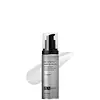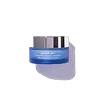What's inside
What's inside
 Key Ingredients
Key Ingredients

 Benefits
Benefits

 Concerns
Concerns

 Ingredients Side-by-side
Ingredients Side-by-side

Water
Skin ConditioningGlycerin
HumectantPentylene Glycol
Skin ConditioningGlyceryl Isostearate
EmollientIsostearyl Isostearate
EmollientC13-15 Alkane
SolventBetaine
HumectantAcrylates/C10-30 Alkyl Acrylate Crosspolymer
Emulsion StabilisingXanthan Gum
EmulsifyingMethyl Gluceth-20
HumectantOryza Sativa Starch
AbsorbentPolyglyceryl-3 Laurate
EmulsifyingSodium Levulinate
Skin ConditioningCaprylyl Glycol
EmollientLevulinic Acid
PerfumingPolyglyceryl-6 Oleate
EmulsifyingHydrolyzed Wheat Protein
Skin ConditioningEthylhexylglycerin
Skin ConditioningHydrolyzed Soy Protein
HumectantSodium Hydroxide
BufferingTetrasodium Glutamate Diacetate
Butylene Glycol
HumectantPectin
Emulsion StabilisingHydroxyethylcellulose
Emulsion StabilisingArginine
MaskingProline
Skin ConditioningSerine
MaskingGlucose
HumectantAcetyl Octapeptide-3
HumectantBacillus/Soybean Ferment Extract
Skin ConditioningSodium Hyaluronate
HumectantChondrus Crispus Extract
Skin ConditioningAcetyl Hexapeptide-8
HumectantDisodium Phosphate
BufferingPolysorbate 60
EmulsifyingSodium Phosphate
BufferingWater, Glycerin, Pentylene Glycol, Glyceryl Isostearate, Isostearyl Isostearate, C13-15 Alkane, Betaine, Acrylates/C10-30 Alkyl Acrylate Crosspolymer, Xanthan Gum, Methyl Gluceth-20, Oryza Sativa Starch, Polyglyceryl-3 Laurate, Sodium Levulinate, Caprylyl Glycol, Levulinic Acid, Polyglyceryl-6 Oleate, Hydrolyzed Wheat Protein, Ethylhexylglycerin, Hydrolyzed Soy Protein, Sodium Hydroxide, Tetrasodium Glutamate Diacetate, Butylene Glycol, Pectin, Hydroxyethylcellulose, Arginine, Proline, Serine, Glucose, Acetyl Octapeptide-3, Bacillus/Soybean Ferment Extract, Sodium Hyaluronate, Chondrus Crispus Extract, Acetyl Hexapeptide-8, Disodium Phosphate, Polysorbate 60, Sodium Phosphate
Water
Skin ConditioningButylene Glycol
HumectantSilybum Marianum Ethyl Ester
Skin ConditioningGlycerin
HumectantCaprylic/Capric Triglyceride
MaskingCetearyl Alcohol
EmollientEchinacea Purpurea Extract
MoisturisingBehenyl Alcohol
EmollientButyrospermum Parkii Butter
Skin ConditioningDipeptide Diaminobutyroyl Benzylamide Diacetate
Skin ConditioningIsononyl Isononanoate
EmollientArachidyl Alcohol
EmollientEthylhexyl Isononanoate
EmollientOryza Sativa Bran
AbrasiveLeuconostoc/Radish Root Ferment Filtrate
AntimicrobialPanthenol
Skin ConditioningTetrahydroxypropyl Ethylenediamine
Caprylyl Glycol
Emollient1,2-Hexanediol
Skin ConditioningArachidyl Glucoside
EmulsifyingMenthoxypropanediol
MaskingHydroxyethyl Acrylate/Sodium Acryloyldimethyl Taurate Copolymer
Emulsion StabilisingAcrylates/C10-30 Alkyl Acrylate Crosspolymer
Emulsion StabilisingTocopheryl Acetate
AntioxidantXanthan Gum
EmulsifyingCetearyl Glucoside
EmulsifyingSorbitan Laurate
EmulsifyingSqualane
EmollientCyclodextrin
AbsorbentTetrahexyldecyl Ascorbate
AntioxidantBuddleja Davidii Extract
Skin ConditioningDisodium EDTA
O-Cymen-5-Ol
AntimicrobialSodium Hyaluronate
HumectantPolysorbate 60
EmulsifyingAnanas Sativus Fruit Extract
Skin ConditioningHydroxyethylcellulose
Emulsion StabilisingAcetyl Dipeptide-1 Cetyl Ester
Skin ConditioningSodium Benzoate
MaskingCitric Acid
BufferingPotassium Sorbate
PreservativeGlycyrrhiza Glabra Root Extract
BleachingPyridoxine Tris-Hexyldecanoate
HumectantArbutin
AntioxidantMagnesium Ascorbyl Phosphate
AntioxidantTropolone
Skin ConditioningMyristoyl Tripeptide-31
Skin ConditioningSodium Metabisulfite
AntioxidantHexapeptide-10
HumectantDiacetyl Boldine
Skin ConditioningTriethyl Citrate
MaskingLavandula Angustifolia Flower/Leaf/Stem Extract
MaskingCitrus Aurantium Bergamia Fruit Oil
MaskingCamellia Sinensis Leaf Extract
AntimicrobialSalvia Officinalis Oil
MaskingCupressus Sempervirens Oil
MaskingRosmarinus Officinalis Leaf Oil
MaskingCoriandrum Sativum Fruit Oil
MaskingSalvia Sclarea Oil
MaskingFucus Vesiculosus Extract
EmollientJasminum Officinale Flower/Leaf Extract
MaskingRosa Damascena Flower Extract
MaskingVanilla Planifolia Fruit Extract
Skin ConditioningRosmarinus Officinalis Leaf Extract
AntimicrobialWater, Butylene Glycol, Silybum Marianum Ethyl Ester, Glycerin, Caprylic/Capric Triglyceride, Cetearyl Alcohol, Echinacea Purpurea Extract, Behenyl Alcohol, Butyrospermum Parkii Butter, Dipeptide Diaminobutyroyl Benzylamide Diacetate, Isononyl Isononanoate, Arachidyl Alcohol, Ethylhexyl Isononanoate, Oryza Sativa Bran, Leuconostoc/Radish Root Ferment Filtrate, Panthenol, Tetrahydroxypropyl Ethylenediamine, Caprylyl Glycol, 1,2-Hexanediol, Arachidyl Glucoside, Menthoxypropanediol, Hydroxyethyl Acrylate/Sodium Acryloyldimethyl Taurate Copolymer, Acrylates/C10-30 Alkyl Acrylate Crosspolymer, Tocopheryl Acetate, Xanthan Gum, Cetearyl Glucoside, Sorbitan Laurate, Squalane, Cyclodextrin, Tetrahexyldecyl Ascorbate, Buddleja Davidii Extract, Disodium EDTA, O-Cymen-5-Ol, Sodium Hyaluronate, Polysorbate 60, Ananas Sativus Fruit Extract, Hydroxyethylcellulose, Acetyl Dipeptide-1 Cetyl Ester, Sodium Benzoate, Citric Acid, Potassium Sorbate, Glycyrrhiza Glabra Root Extract, Pyridoxine Tris-Hexyldecanoate, Arbutin, Magnesium Ascorbyl Phosphate, Tropolone, Myristoyl Tripeptide-31, Sodium Metabisulfite, Hexapeptide-10, Diacetyl Boldine, Triethyl Citrate, Lavandula Angustifolia Flower/Leaf/Stem Extract, Citrus Aurantium Bergamia Fruit Oil, Camellia Sinensis Leaf Extract, Salvia Officinalis Oil, Cupressus Sempervirens Oil, Rosmarinus Officinalis Leaf Oil, Coriandrum Sativum Fruit Oil, Salvia Sclarea Oil, Fucus Vesiculosus Extract, Jasminum Officinale Flower/Leaf Extract, Rosa Damascena Flower Extract, Vanilla Planifolia Fruit Extract, Rosmarinus Officinalis Leaf Extract
Ingredients Explained
These ingredients are found in both products.
Ingredients higher up in an ingredient list are typically present in a larger amount.
Acrylates/C10-30 Alkyl Acrylate Crosspolymer is a synthetic polymer. It is used to thicken and improve the texture of products. Due to its properties, it can prevent water and oil ingredients from separating.
Butylene Glycol (or BG) is used within cosmetic products for a few different reasons:
Overall, Butylene Glycol is a safe and well-rounded ingredient that works well with other ingredients.
Though this ingredient works well with most skin types, some people with sensitive skin may experience a reaction such as allergic rashes, closed comedones, or itchiness.
Learn more about Butylene GlycolCaprylyl Glycol is a humectant and emollient, meaning it attracts and preserves moisture.
It is a common ingredient in many products, especially those designed to hydrate skin. The primary benefits are retaining moisture, skin softening, and promoting a healthy skin barrier.
Though Caprylyl Glycol is an alcohol derived from fatty acids, it is not the kind that can dry out skin.
This ingredient is also used as a preservative to extend the life of products. It has slight antimicrobial properties.
Learn more about Caprylyl GlycolGlycerin is already naturally found in your skin. It helps moisturize and protect your skin.
A study from 2016 found glycerin to be more effective as a humectant than AHAs and hyaluronic acid.
As a humectant, it helps the skin stay hydrated by pulling moisture to your skin. The low molecular weight of glycerin allows it to pull moisture into the deeper layers of your skin.
Hydrated skin improves your skin barrier; Your skin barrier helps protect against irritants and bacteria.
Glycerin has also been found to have antimicrobial and antiviral properties. Due to these properties, glycerin is often used in wound and burn treatments.
In cosmetics, glycerin is usually derived from plants such as soybean or palm. However, it can also be sourced from animals, such as tallow or animal fat.
This ingredient is organic, colorless, odorless, and non-toxic.
Glycerin is the name for this ingredient in American English. British English uses Glycerol/Glycerine.
Learn more about GlycerinHydroxyethylcellulose is used to improve the texture of products. It is created from a chemical reaction involving ethylene oxide and alkali-cellulose. Cellulose is a sugar found in plant cell walls and help give plants structure.
This ingredient helps stabilize products by preventing ingredients from separating. It can also help thicken the texture of a product.
This ingredient can also be found in pill medicines to help our bodies digest other ingredients.
Learn more about HydroxyethylcellulosePolysorbate 60 is used to help stabilize products. It is a surfactant and emulsifier. These properties help keep ingredients together in a product. Surfactants help reduce surface tension between ingredients with different states, such as liquids and solids. Emulsifiers help prevent oils and waters from separating.
Polysorbate 60 is sorbitol-based and created from the ethoxylation of sorbitan. Ethoxylation is a chemical reaction used to add ethylene oxide. Sorbitan is a the dehydrated version of sorbitol, a sugar found in fruits.
In this case, the 60 comes from reacting 60 units of ethylene oxide with sorbitan.
Polysorbates are commonly used in medicine and foods.
Learn more about Polysorbate 60Sodium Hyaluronate is hyaluronic acid's salt form. It is commonly derived from the sodium salt of hyaluronic acid.
Like hyaluronic acid, it is great at holding water and acts as a humectant. This makes it a great skin hydrating ingredient.
Sodium Hyaluronate is naturally occurring in our bodies and is mostly found in eye fluid and joints.
These are some other common types of Hyaluronic Acid:
Learn more about Sodium HyaluronateWater. It's the most common cosmetic ingredient of all. You'll usually see it at the top of ingredient lists, meaning that it makes up the largest part of the product.
So why is it so popular? Water most often acts as a solvent - this means that it helps dissolve other ingredients into the formulation.
You'll also recognize water as that liquid we all need to stay alive. If you see this, drink a glass of water. Stay hydrated!
Learn more about WaterXanthan gum is used as a stabilizer and thickener within cosmetic products. It helps give products a sticky, thick feeling - preventing them from being too runny.
On the technical side of things, xanthan gum is a polysaccharide - a combination consisting of multiple sugar molecules bonded together.
Xanthan gum is a pretty common and great ingredient. It is a natural, non-toxic, non-irritating ingredient that is also commonly used in food products.
Learn more about Xanthan Gum